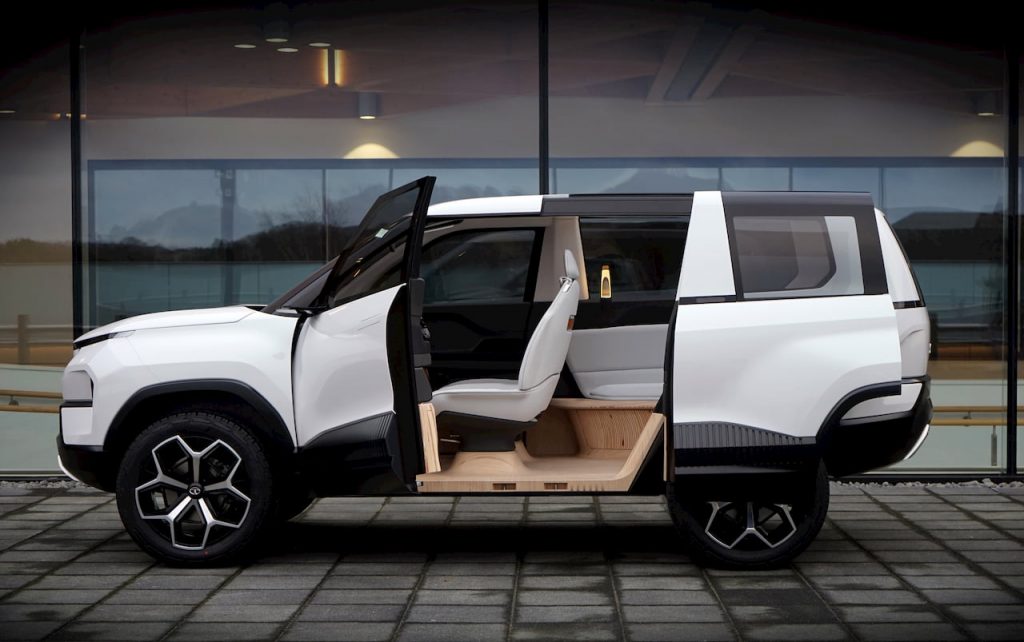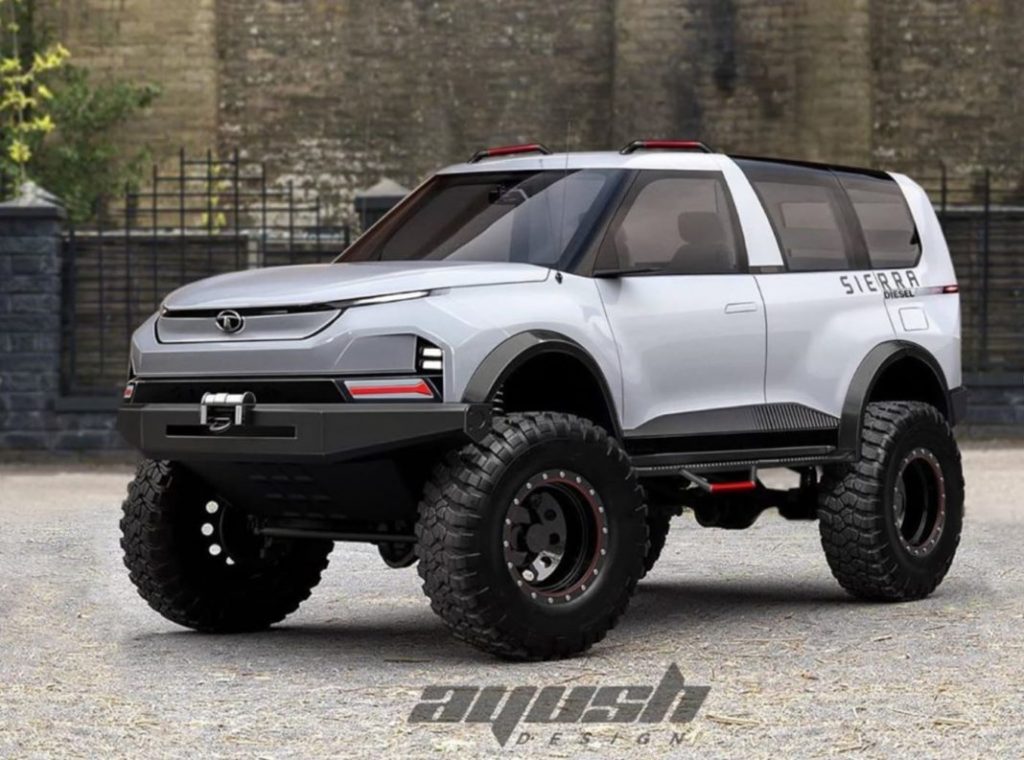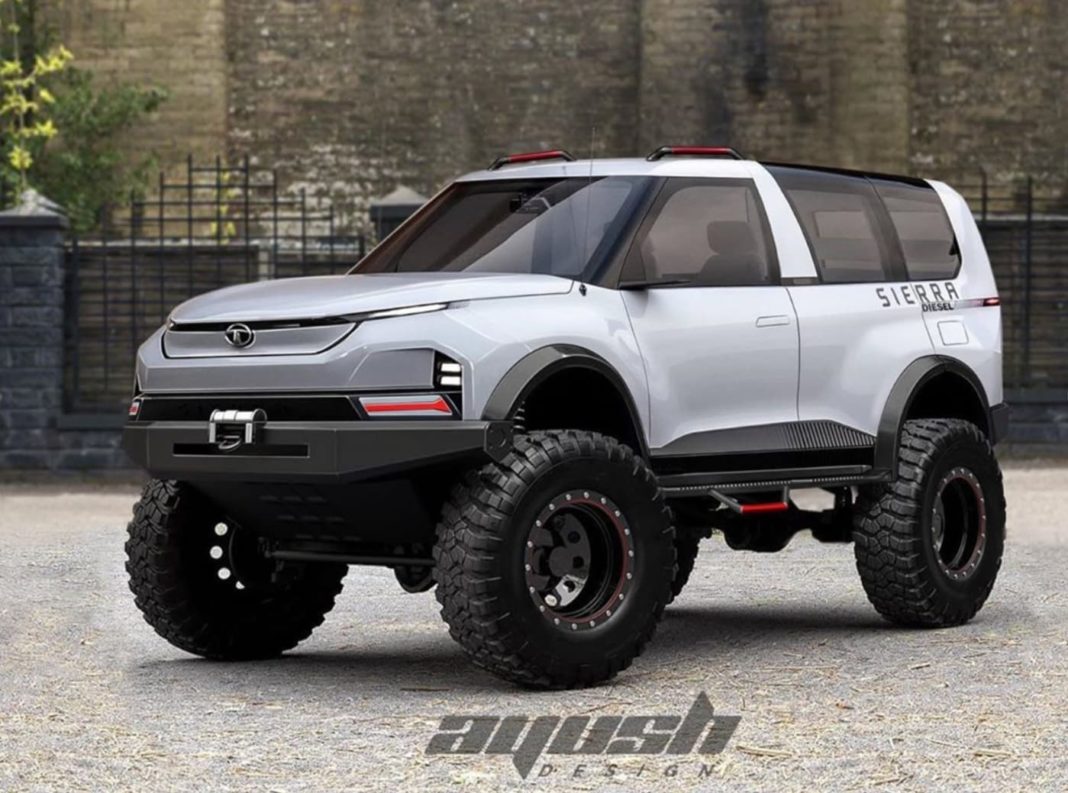Designer Ayush Dubey has created a digital mockup of a Tata Sierra EV concept based monster truck, which we actually think off-road enthusiasts would be keen on if the vehicle were in production.
Speaking of the Tata Sierra’s production, the company is yet to confirm if it will bring back the nameplate, with the iconic design. However, we know that its designer, Pratap Bose, is working towards bringing the concept to a reality. However, like any other product, a sustainable business case and the technical feasibility is what will convince Tata bosses to greenlight the Sierra.

Tata Motors’ portfolio in India does have a whitespace for a potential Tata Sierra to fit in. After the Tata Nexon, the company only offers the Harrier SUV, which is a size larger than the Hyundai Creta/Kia Seltos and is often not the ideal car for urban dwellers owing to its larger size. For reference, the Harrier is 4.6 meters in length whereas the Korean twins are ‘compact’ at 4.3 meters.
The concept Sierra was 4.15 meters, but even if Tata made the lifestyle SUV slightly larger, it could open up a new segment for the company: A 4.3-ish meter, stylish SUV, unlike its boxy rivals. The Sierra’s Alfa platform is modular enough to cater for the extra width as Tata says the platform can accommodate up to 4.3 meter long vehicles.

And while a hybrid or full electric could be offered to the discerning customers, a traditional petrol/diesel with MT/AT would give the carmaker the volume of scale necessary for its own tooling and manufacturing and that of its part suppliers too. Tata is already working towards rolling out hybrid technology on larger products like the Harrier, and at the very least, a 48V Mild Hybrid could be seen on a production Sierra.
As for the Tata Sierra EV, it could boast of a made in India battery pack, including the cells, and electric motors. Tata Group companies could assist the carmaker to ensure this, as Tata Chemicals has been working with Tata Motors for Li-ion cell manufacturing, Tata Components is assisting with the motor, and this month Tata Technologies said it was partnering with GKN for eMobility and driveline systems.
And finally, the best example Tata can take at the moment for the Sierra’s business case is that of the Mahindra Thar, which despite being a hardcore 4×4, is still a lifestyle vehicle at the end of the day. Customers who buy into such lifestyle vehicles, like the Thar or a future Tata Sierra, are likely to already have a primary car for their daily runs; the secondary purchase is to add excitement to their weekend drives, or holiday trips. The Thar has acquired 15,000 bookings since its launch this month, which only goes to show that a niche market not only exists, but is also developing in the INR 10-20 lakh price range.

![Will the launch of the Tata HBX EV get pushed to 2023? [Update]](https://electricvehicleweb.com/wp-content/uploads/2020/12/Tata-HBX-H2X-Hornbill-interior-dashboard-spy-shot-350x166.jpg)
![Everything we know about the upcoming Tata Altroz EV [Update]](https://electricvehicleweb.com/wp-content/uploads/2020/02/Tata-Altroz-EV-side-view-1-Auto-Expo-2020-350x234.jpeg)
![New Tata Safari a serious candidate for an electric vehicle [Update]](https://electricvehicleweb.com/wp-content/uploads/2021/02/Tata-Safari-EV-350x242.jpg)